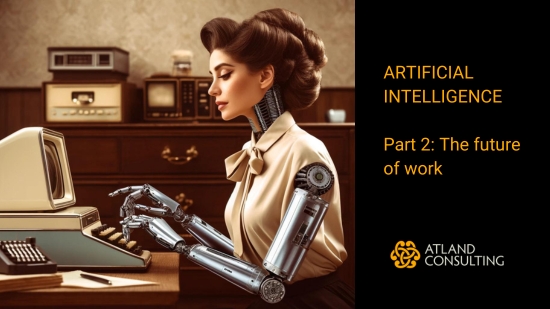How will AI affect the labour market? There is only one honest answer: we don’t know.
If we do a quick internet search, we will find a considerable amount of more or less in-depth studies on what is going to happen with the “landing” of this new technology. Some make a cautious and calm reflection on what we may see and point out the most likely “hot spots”.
Some have tried to show off their knowledge and have invented indices, tables, concepts and imagined scenarios of all kinds, trying to put themselves at the centre of it all. Beatifull? Yes. Interesting? Not at all.
If we wanted to be original, we should have spared the references to the printing press, the steam engine, robotic assembly lines and Luddism. Are you sure? Let’s give ourselves permission to dwell on those tired references because they will serve to point out one of the changes that AI brings and that helps explain its uniqueness.
Prompt engineering
It has always been said that the emergence of new technologies generates new opportunities and that along with the destruction of jobs comes the emergence of new professions. The first profession to be born in the light of AI was that of prompts engineer. This pedantic title referred to the professional capable of making AI deliver the best possible results. Despite the title of engineers, they were more like mediators or translators between the user and the software.
Training courses proliferated and job offers constantly appeared in the news, promising the most interesting jobs for those skilled in this new and revolutionary job competence.
In September 2023, Yongchao Zhou of Cornell University published a paper on the latest developments in prompts. They had achieved a significant improvement in the quality and timeliness of results by working with ChatGPT and the key to this improvement was given to them by … ChatGPT. In other words: the software had done the job that the prompts engineers were unable to do. It’s as if your car fired the mechanic or banned you from driving because he thought you weren’t driving well at all.
A new technology appears and in less than a year it has wiped out the first profession that had been generated by its appearance. If anyone had any doubts about the level of uncertainty that AI’s steps provoke and the speed at which it evolves, I think they have now been allayed.
AI is interesting enough without adding corporate ego.
Some of the key issues in the short term are:
The immediate impact (whether lasting or not) it will have on some professions.
The power that some technology companies will have.
The fact that for the first time process automation will also affect highly skilled workers.
It will be even more difficult to get information, and not just about AI, but about anything.
That regulation is going to be slow because the boundaries change daily and there is hardly time to measure the impact and reflect on ethical issues.
Today we will talk about the first of these.
The immediate impact.
One of the most realistic analyses is that of the ILO. It states that 25% of jobs will be directly impacted by AI. The first jobs to be replaced will be administrative tasks. All these jobs were already losing skills with the proliferation of automation and increasingly accessible software that does not even require extensive training to use. Add to this the fact that most countries want to digitise all transactions to make tax collection faster, and you have a cocktail that puts many jobs at risk.
While many studies develop imaginative stories about the possibility of an AI replacing a broker, there are people whose jobs are already at risk, and almost 70% of them are women. Moreover, administrative tasks are one of the main job opportunities for many women in developing countries.
The ILO warns of another danger for this job profile: overburdening. Since doing the work they have been doing up to now takes less time, more work will have to be added to justify the working day. The danger here lies in thinking that if you have to do two different tasks of five minutes each, you will be done in ten minutes and the result will be good. Switching tasks takes time and wear and tear: the correct sum is five minutes + stop + preparation + adaptation + five minutes. No, it doesn’t add up to ten, it adds up to more. Let’s not forget that, depending on how different the two tasks may be, the cost in effort on the part of the worker may vary. The greater the difference, the greater the fatigue.
Of course, this will be much more difficult for older people, because the older they get, the more difficult it is to adapt. The incidence by country will also be different.
Gmyrek, P., Berg, J., Bescond, D. 2023. Generative AI and jobs: A global analysis of potential effects on job quantity and quality, ILO Working Paper 96 (Geneva, ILO). https://doi.org/10.54394/ FHEM8239
Cazzaniga and others. 2024. “Gen-AI: Artificial Intelligence and the Future of Work.” IMF Staff Discussion Note SDN2024/001, International Monetary Fund, Washington, DC.
“The impact of artificial intelligence on growth and employment” Ethan Ilzetzki Suryaansh Jain / Centre for Economic Policy Research 20 Jun 2023
PwC (2017), The macroeconomic impact of artificial intelligence.



